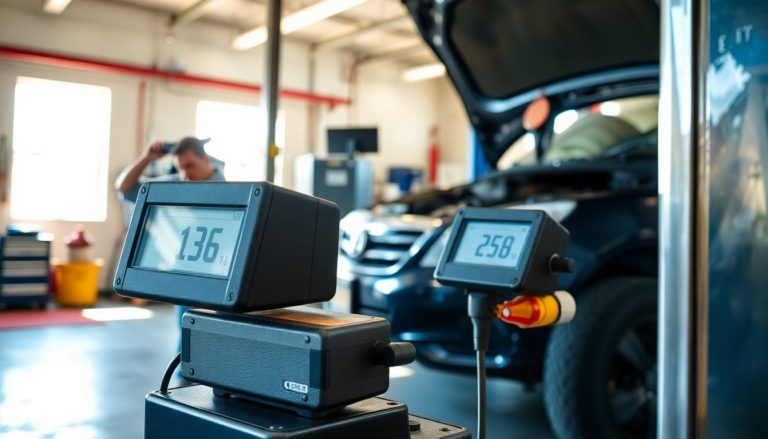Argomenti trattati
Ever wondered why your car needs a smog check? It’s not just a bureaucratic hurdle; it’s part of California’s commitment to cleaner air. These checks ensure that your vehicle meets emissions standards, helping to reduce pollution and keep our skies blue. I remember when I first had to go through this process—it felt daunting, but once I understood the ins and outs, it became a routine part of owning a car in this state.
What is a smog check?
A smog check, or emissions test, is an inspection that assesses your vehicle’s exhaust emissions to ensure they comply with environmental regulations. This is particularly crucial in California, where air quality can be a real concern. If your vehicle fails this check, it means it’s emitting harmful pollutants above the acceptable limits. The goal? To identify and rectify these issues—saving you costly repairs down the line and contributing to a healthier environment.
Who needs a smog check?
Generally speaking, most gasoline, hybrid, and alternative-fuel vehicles made from 1976 onwards require a smog check. Diesel vehicles need inspections if they were manufactured in 1998 or later. And it’s not just your average sedan; RVs, motorhomes, collector cars, and government vehicles fall under the same umbrella as long as they meet the aforementioned criteria. For those of you with newer vehicles, there are exceptions: gasoline vehicles up to eight model years old can skip the check during registration renewal. But what about when ownership changes? You guessed it—a smog check is usually necessary.
When is a smog check required?
Every two years, owners must submit their vehicles to a smog check to renew registration. This can be found on your DMV registration renewal notice, which might state, “Smog Certification Required.” If you’re changing ownership of a vehicle, a smog check needs to be performed within the last 90 days prior to the sale, especially if buying from a private seller. Interestingly, a family transfer may not always require a smog check—so keep that in mind if you’re thinking of gifting a car!
Exemptions and notable details
Now, let’s dive into the nuances. Vehicles that are eight years or newer generally don’t need a smog check during registration renewal, but they do require a smog abatement fee instead. For change of ownership, vehicles that are less than four years old are exempt from the smog check but incur a smog transfer fee instead. It can be a bit intricate, and the rules differ significantly for diesel vehicles—there are no model year exemptions for them. It’s important to pay attention to these details to avoid unexpected fees.
Choosing the right smog check station
Not all smog check stations are created equal, and knowing where to go can save you time and headaches. Some stations only conduct inspections, others handle repairs, and some do both. You’ll come across test-and-repair stations, test-only stations, and STAR stations—each with specific capabilities. Your DMV notice will indicate if your vehicle needs to go to a STAR station, which operates under stricter performance standards. Personally, I’ve found that getting recommendations from friends or family can lead to discovering reliable stations nearby.
Preparing for your smog check
Before heading to the smog check station, ensure your vehicle is ready. If the check engine light is illuminated, it’s best to address that issue first—your vehicle won’t pass if it’s on. Similarly, if you’ve just replaced or disconnected your battery, give your car some time to recalibrate. The inspection typically lasts around 30 minutes, so you might want to bring a book or something to keep you entertained while you wait.
Benefits of smog checks
Beyond compliance with the law, smog checks are beneficial in several ways. They help ensure cleaner air by reducing harmful pollutants, which is a significant win for public health. Additionally, fixing emissions issues can lead to better vehicle performance, enhancing fuel efficiency and prolonging the life of your vehicle. Who doesn’t want to save money on gas and repairs? It’s a win-win situation.
What happens after the inspection?
After your vehicle passes (or fails) the smog check, you’ll receive a vehicle inspection report detailing the results. If everything is in order, the station will issue a smog certificate, which is electronically sent to the DMV and valid for 90 days. If your vehicle requires repairs, some emissions-related parts might even be covered under warranty. In my experience, staying on top of these inspections has helped me avoid larger issues down the road.
Final thoughts
In the grand scheme of things, smog checks may seem like just another task on the never-ending list of car maintenance, but they play a crucial role in ensuring our air remains clean. So next time you’re gearing up for a smog check, remember: it’s not just about passing a test—it’s about doing your part for the environment and your vehicle’s wellbeing. As many know, a little prevention can go a long way!

